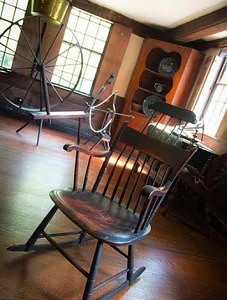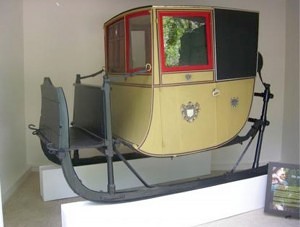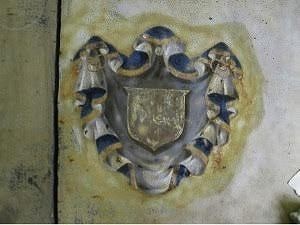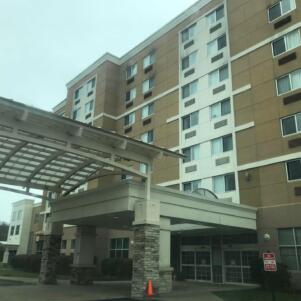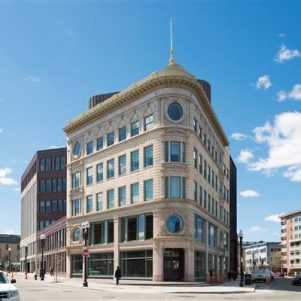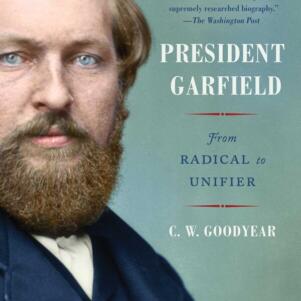Carriages and marriages at Quincy Homestead
By Mary McCleary | July 17, 2015, 8:59 EDT
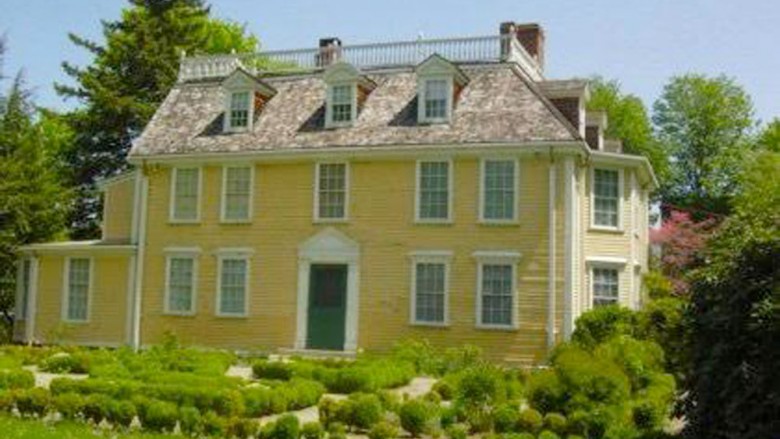
The Boston area is home to so many resplendent national historical treasures. Most residents have already seen the well-known, prominent sites from the region’s colorful past. However, there are a number of hidden gems that tell the story of the personal lives and legacies of lesser-known figures in American history. One such locale is the Dorothy Quincy Homestead, located at the intersection of Hancock and Butler streets in Quincy.
The house’s extensive collection of furnishings is significant for its historical value, marking both the family’s progress and the evolution of early American interiors. It offers an intriguing glimpse into how tastes and lifestyles evolved over three centuries of occupants.
The land was acquired by Edmund Quincy II in the 1630s, and the house he built there was expanded over two centuries by five successive generations of the family. Consequently, the property is a rare example of colonial architecture because the 17th century elements of the original home are easily visible in the present mid-18th century structure.
It was also the childhood home of John Hancock’s wife, Dorothy Quincy. John Hancock was the first signer of the Declaration of Independence, as well as the President of the Second Continental Congress and the first governor of the Commonwealth. During the Revolutionary period, the home was visited by Benjamin Franklin, John Adams, and other notable figures. Through marriage, the Quincy family gave rise to many famous descendants, such as Abigail Adams, John Quincy Adams, and Oliver Wendell Holmes.
When the Quincy Homestead was threatened by developers in 1904, the Colonial Dames of Massachusetts purchased it with the help of local residents and Charles Francis Adams, Jr. (grandson of Pres. John Quincy Adams). The Dames then transferred the house and land to the Commonwealth. The ladies’ organization continues to maintain the home’s interior and collection of furnishings, which they still own, and also conducts historic tours for visitors.
When I first visited the Quincy Homestead a few years ago, one of the docents took me around the grounds and showed me a dusty, broken carriage in the garage that had belonged to John Hancock. It was in a dilapidated state, but nevertheless retained many beautiful features from its original grandeur. In the 19th century, this chariot was converted into a horse-drawn sleigh, and then left along with other discarded items in the garage for decades. Thankfully, last year the Dames joined forces with the Quincy community preservation committee to fully restore Hancock’s 238-year-old carriage.
At first glance, the restored chariot reminded me of George Washington’s carriage, which I had seen at Mt. Vernon. The similarities are striking, such as the crisp, graceful lines of the main body and passenger area, the coat of arms on the door, and the color scheme (Washington’s is red with yellow accents, and Hancock’s is yellow with red accents).
So I decided to ask the Hancock carriage renovator, Ted Eayrs of Blackburn Restoration, for his insights. Mr. Eayrs confirmed that the carriages share many common features since they were built in the Chariot style that was prevalent in the 1740s–1780s. After that time period, the style fell out of fashion and was replaced by the brougham in the 1790s.
Mr. Eayrs also noted that Hancock’s coat of arms is missing its shield. He speculated that when Hancock had the carriage painted in 1778, he avoided painting his English hereditary insignia because the Revolution was in full swing. George Washington had also wondered whether to display his English coat of arms on his carriage during the war. These and other fascinating details make the Hancock carriage a compelling find, and certainly worth the visit to the Quincy Homestead.
Along with the rest of the collection, the chariot will be available for public viewing at the Quincy Homestead Open House this Saturday, July 18th. The Colonial Dames will give free historic tours from Noon–4pm, and the DCR Park staff will provide a free “Kids Colonial Games on the Grass” for children and their families from 1-3pm, weather permitting.
Contact Mary McCleary at [email protected]

